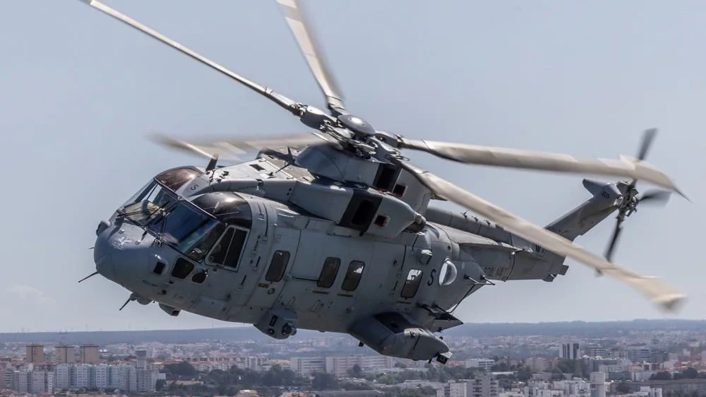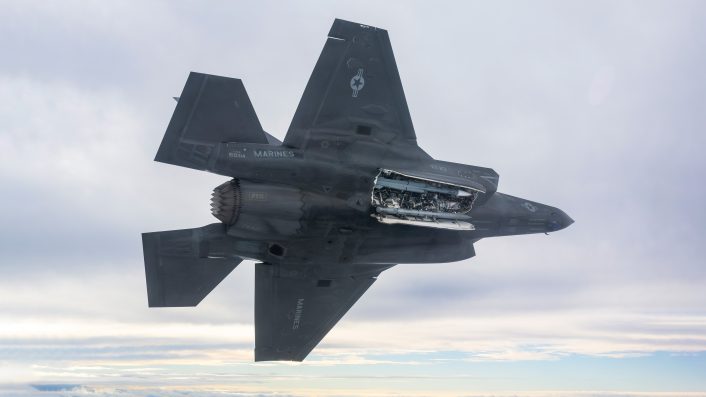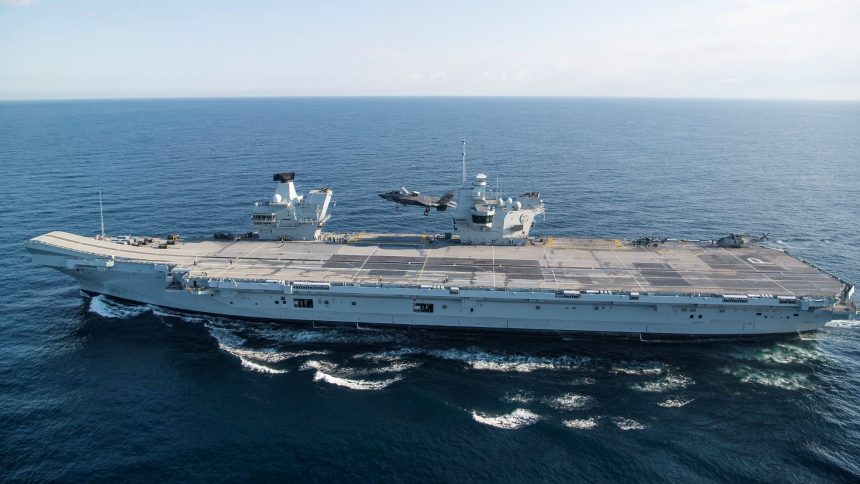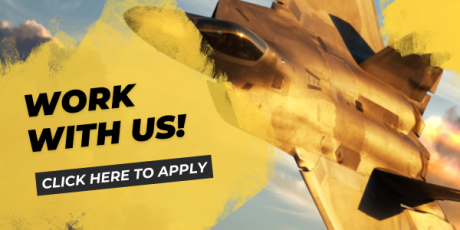The HMS Prince of Wales aircraft carrier is working towards the UK’s most ambitious carrier deployment in recent years, with two full F-35B squadrons on board.
After nearly a year of fervent preparations, the Royal Navy’s aircraft carrier HMS Prince of Wales will soon set sail for its deployment to the Indo-Pacific, leading the CSG25 (Carrier Strike Group 25) in a mission the British government has designated ‘Operation HIGHMAST’. The eight month long cruise would see the Queen Elizabeth-class carrier hosting for the first time two full squadrons of F-35B Lightning II STOVL (Short Take-Off Vertical Landing) jets in an international deployment.
The UK Defence Journal quoted Defence Minister Maria Eagle’s letter to the Defence Select Committee: “The focus now is to prepare for Op HIGHMAST, where HMS Prince of Wales will deploy with two embarked UK Front Line F-35 Squadrons. This Operation will display our global Carrier Strike reach, demonstrating the ability to deploy, operate and command a Carrier Strike Group consisting of two UK Lightning squadrons, with associated support.”
The two squadrons that will operate on the carrier are the 617 Squadron “The Dambusters” and the 809 Naval Air Squadron, which were reformed in 2018 and 2023, respectively, as the Royal Air Force’s and Royal Navy’s frontline F-35 units. It must be noted that the two squadrons have operated from the carrier in the past, although not together.
The first unit to deploy at sea with the F-35B was 617 Squadron, which also took part in the maiden operational deployment of the HMS Queen Elizabeth, dubbed ‘Operation Fortis’, as part of the Carrier Strike Group 21. In that occasion, the carrier embarked 18 F-35s, of which ten were of the USMC’s Marine Fighter Attack Squadron (VMFA) 211.
The Exercise Strike Warrior in Sep. 2024 was the first deployment of 809 NAS on a RN carrier after its recommissioning. This itself was within two months of the unit’s first sortie with the stealth aircraft.
As we have noted here at The Aviationist, while each UK F-35 squadron is marked either as a Royal Air Force or Royal Navy unit, all squadrons operate on a joint basis with serving personnel from both services. This concept has been previously dubbed ‘Lightning Force’.
F-35s of 809 and 617 Squadrons have embarked on HMS Prince of Wales for Ex. Strike Warrior.
(Images: @COMUKCSG) pic.twitter.com/yxjKgtTnbW
— UK Forces Tracker (@UKForcesTracker) September 30, 2024
CSG25
The CSG25 deployment will take the fleet across the Mediterranean, Middle East, Indian Ocean, and into the Pacific, conducting exercises with key allies including Australia, Japan, and New Zealand. Drills are also likely to be held in the SCS (South China Sea) in response to rising tensions with the PRC (People’s Republic of China).
The carrier air wing will include 24 F-35Bs, 12 each from 617 Squadron and 809 NAS; four Wildcat HMA2 from the 815 Naval Air Squadron based at RNAS Yeovilton in Somerset, that can carry the Martlet Lightweight Multirole Missile and the Sea Venom anti-ship missile; the Merlin Mk2s ASW (Anti-Submarine Warfare) helicopters from the 820 NAS based at RNAS Culdrose; and RAF (Royal Air Force) CH-47 Chinooks.
The supporting ships include the Type 45 HMS Daring-class destroyer HMS Dauntless (D33); Type 23 frigate HMS Richmond (F239) ASW frigate; an Astute-class nuclear-powered attack submarines and Royal Fleet Auxiliary vessels for fleet replenishment and support.
Speaking earlier this year in the House of Lords, Defence Minister Lord Coaker described Operation HIGHMAST as a critical signal of Britain’s intent:
“We will lead a carrier strike group out into the Indo-Pacific to demonstrate that the law of the sea, the international rules-based order, is something that is important to us.”
Truman CSG and UK Carrier Strike Group sail together for PHOTEX ahead of this weekend’s conclusion to Ex. Strike Warrior 2024.
NRP Dom Francisco de Almeida, RFA Tidespring, USS Harry S. Truman, HMS Prince of Wales, RFA Tidesurge and USS Gettysburg.
(Source: @COMUKCSG) pic.twitter.com/q78ThLbUsV
— UK Forces Tracker (@UKForcesTracker) October 25, 2024
Extensive preparations
The mammoth CSG25 deployment was confirmed by the British government in July 2024, stemming from the pressing and shared geopolitical Allied concerns in the Indo-Pacific. This would be the Royal Navy’s first carrier-led mission since the Carrier Strike Group 21 deployment.
Forces News quoted the commanding officer of the 820 NAS, Cdr. Karen Snel, who said they have been “building up” for the deployment “with training and operations as part of carrier strike groups through successive embarkations,” and noted Exercise Strike Warrior’s role in the preparations. “Everything from deck landings to high-end warfighting as well as numerous training sorties have been practised to ensure they are ready for the deployment,” the report added.
 Undated image of a Royal Navy Merlin helicopter. (Image credit: Royal Navy)
Undated image of a Royal Navy Merlin helicopter. (Image credit: Royal Navy)Another interesting feature of the CSG25 would be CH-47 Chinooks from the RAF 12 Squadron, based at RAF Odiham, deploying from the HMS Prince of Wales. The unit trained with the Royal Navy in Exercise Hathi Pol with “interoperability” drills to achieve “Embarkation Qualifications,” and practiced operating off the aircraft carrier.
HMS Prince of Wales has been visited by HM King Charles III as the carrier works up for CSG25.
The ship has been conducting flight operations with Merlin, Chinook and F-35.
(Src/img: @HMSPWLS, https://t.co/TlPoiVfCWA) pic.twitter.com/94XgadxV8s
— UK Forces Tracker (@UKForcesTracker) March 4, 2025
The RAF operates Mk 5, Mk 6 and Mk 6A variants of the extremely capable and versatile heavy-hauling helicopter, which is also extensively used for SAR (Search and Rescue) and HADR (Humanitarian Assistance Disaster Relief) roles. Drone operators from the 700X NAS would join the mission for the first time.
Training for the Houthi challenge
By the middle of Mar. 2025, the RN and the Royal Norwegian Navy concluded the annual 20-day long Exercise Tamber Shield, with the drills this time specifically designed for CSG25. Over 200 RN personnel, four Wildcat helicopters from the 815 NAS, four P2000 fast patrol boats and Norwegian missile craft exercised in the Scandinavian country’s fjords. The Royal Navy said that it tested “the ability of crews of the larger ships to fend them off – and the Wildcats to ‘target’ them with Martlet anti-ship missiles.”
This is because the armada will also have to pass the formidable technological and tactical challenge posed by the Houthis in the Red Sea. The Iran-aligned non-state actor has demonstrated its asymmetric capability by employing cheap, mass produced drone, anti-ship cruise and ballistic missile fires on sophisticated coalition warships. The group also has a significant fleet of USVs (Unmanned Surface Vehicles).
RN Warships HMS Diamond and HMS Richmond have been part of the coalition Operation Prosperity Guardian in the Gulf of Aden and the Red Sea, shooting down several attack drones, using Sea Viper, Sea Ceptor air defense missiles and Phalanx CIWS (Close-In Weapons System). UK warplanes have also joined US aircraft in several air strikes on Yemen since 2024.
 A Royal Navy Wildcat helicopter dropping a Sting Ray torpedo during Exercise Tamber Shield with the Royal Norwegian Navy in Mar. 2025. (Image credit: Royal Navy)
A Royal Navy Wildcat helicopter dropping a Sting Ray torpedo during Exercise Tamber Shield with the Royal Norwegian Navy in Mar. 2025. (Image credit: Royal Navy)In the Royal Navy’s release, 815 NAS’s senior pilot Lt. Cdr. Oliver Brookshank distinguished this iteration of Ex Tamber Shield with Norwegian allies. The Wildcat and its Martlet missile were being used as part of “maritime strike tactics” in “Norway’s congested archipelago” in order “to ensure readiness for operations in some of the most congested waters in the world, in the defence of the UK Carrier Strike Group.”
The CO of the fast patrol boat HMS Dasher, Lt. Jack Mason, revealed how the P2000s in the Norwegian fjords developed “advanced navigation techniques within the Norwegian fjords, whilst also developing standard operating procedures to destroy an air threat within a littoral environment.” This experience will also be handy in the littoral and shallow waters of the SCS, where the U.S. Marine Corps’ MEUs (Marine Expeditionary Units) have been deployed on features controlled by friendly Asian countries.
UK F-35Bs
The UKDJ added that Eagle’s letter provided updates on the broader F-35 program, explaining that the UK took delivery of 36 of the 48 aircraft in the first phase, with the final batch due before Mar. 2026. “Full Operating Capability for the force is scheduled for no later than Dec. 31, 2025,” said the minister, adding that “additional aircraft [are] scheduled to arrive in May 2025.”
 A Meteor missile in the F-35’s starboard weapon bay. (Image credit: Royal Air Force)
A Meteor missile in the F-35’s starboard weapon bay. (Image credit: Royal Air Force)The British government is “committed to expanding the fleet to 74 aircraft, with the eventual establishment of a third front-line squadron by 2033.” Upgrades under the TR3 (Technology Refresh 3) Block 4 programs will include UK-specific enhancements like the integration of the Meteor BVRAAM and the SPEAR 3 air-to-ground standoff weapons.
The Aviationist reported on Feb. 28, 2025 that a U.S. Marine Corps F-35B from the Air Test and Evaluation Squadron 23 (VX-23) flew with the Meteor AAM for the first time from NAS Patuxent River, Maryland, in support of the campaign to integrate the missile onto UK’s Lightning IIs.









